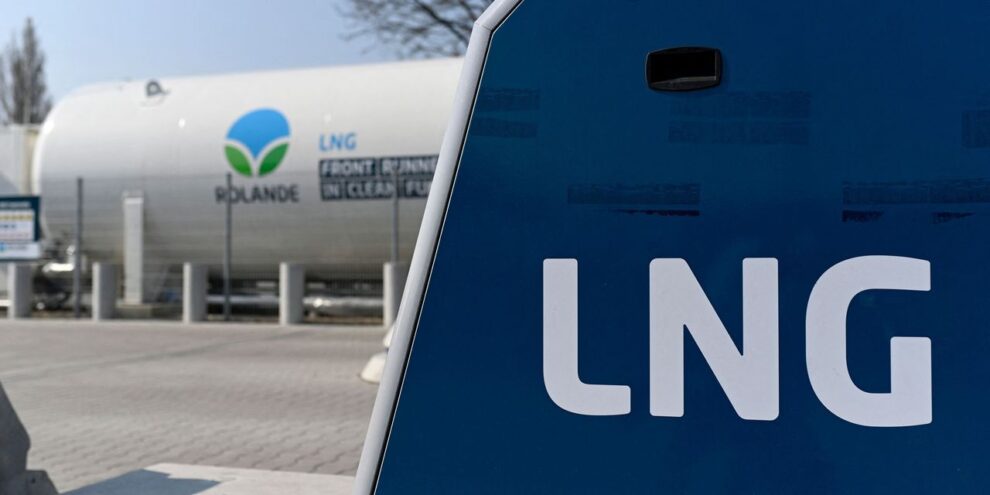
A move by the U.S. on Friday to help ease Europe’s reliance on energy from Russia will likely help transform natural gas to a more global market over the long run, but may have little impact on immediate supplies to Europe.
U.S. President Joe Biden and European Commission President Ursula von der Leyen on Friday announced a joint task force to reduce Europe’s dependence on Russian fossil fuels and strengthen European energy security.
Among the task force’s objectives, the U.S. will work with international partners and look to ensure additional liquefied natural-gas volumes for the EU market of at least 15 billion cubic meters in 2022, with expected increases going forward, the White House said.
Regional market
For what historically has been a highly regional market, the growth of liquefied natural gas, the European energy crisis, and the Russian invasion of Ukraine have “highlighted the now more global nature of gas markets and what these dynamics can mean in times of stress,” said Christopher Louney, analyst at RBC Capital Markets, in a Thursday note.
The natural-gas market has historically been a more regional one, given that the commodity is transported via pipeline, or converted to liquefied natural gas, or LNG, to ship it overseas. When LNG tankers reach their destination, the LNG is stored in cryogenic tanks before it’s returned to its gaseous state.
Given the market’s regional nature, the U.S. benchmark price for natural gas have been largely unaffected by the supply concerns facing Europe, but front-month natural-gas futures NGJ22, +2.15% NG00, +2.09% still traded nearly 45% higher year to date as of Thursday.
The rise is more likely associated with the curtailment of exploration and production and the push for electric vehicles, than with the European energy crisis, said Beth Sewell, president and chief executive officer at Quantum Gas & Power Services.
The European benchmark Dutch TTF gas futures rallied in the wake of the Russian invasion of Ukraine. The April contract was at 103.265 euros per megawatt hour in Friday dealings, after trading as high as 227.201 euros this month.
U.S. market prices remain mostly “insulated,” but “in our view, we are learning the dynamics of a new era for gas,” Louney said. The Russia-driven energy crisis in Europe is “leading to plans like REPowerEU, Germany securing long term Qatari LNG contracts, the rise of U.S. LNG exports, and business leaders calling for a Marshall Plan for U.S. and EU energy security,” he said.
The Marshall Plan was a multipronged U.S. strategy after World War II to rebuild Europe, help modernize its economy, and block communism from taking root in the war-torn continent.
“Politics and geopolitics are quite clearly playing a key role alongside physical fundamentals in what has historically been a far more regional commodity,” said Louney.
Contracts and capacity
Even so, Quantum Gas & Power’s Sewell doesn’t believe that the U.S. is in much of a position to ship more LNG to Europe.
“LNG terminals require long-term contracts to support their financing and the LNG is sold under long term contracts,” she explained. “This means that most of the LNG for export is already contracted for a long time to come, so shippers would face massive breach of contract litigation.”
U.S. LNG exports reached a record high in the first half of 2021, averaging 9.6 cubic feet per day, up 42% from the same period in 2020, according to the Energy Information Administration.
The EIA expects U.S. LNG export capacity to be the world’s largest by the end of 2022, with nominal capacity seen increasing to 11.4 bcf per day, and peak capacity expected to rise to 13.9 bcf per day. In 2024, the EIA said U.S. LNG peak capacity will further rise to an estimated 16.33 bcf per day.
“LNG throughput is fully subscribed, so there’s no capacity to add more and it takes two to three years to build new,” said Sewell. Also, “Europe doesn’t have incremental capacity to receive more shipments either.”
Still, there’s one bright spot for Europe, she said, with a new underwater pipeline being built between Norway and Poland that’s expected to go into service by October 2022. “There will be additional gas for the upcoming winter,” Sewell said.
Long-term impact
However, analysts believe the move to ease European dependence on Russian natural gas could have long-term implications for the market.
“This has major implications for long-term LNG demand in the EU and LNG projects in the U.S.,” said Sindre Knutsson, vice president at Rystad Energy, in a note Friday.
Knutsson said the U.S. supplied 25 billion cubic meters to Europe during 2021, and already supplied an extra 8 bcm from January to February of this year, compared with the same period last year.
The U.S. can “easily exceed” the 15 bcm target, he said, as European price signals on the TTF , the virtual Dutch trading platform for natural gas also known as the Title Transfer Facility, are likely to “far exceed” Asian spot prices.
Knutsson said the 15 bcm target “indicates U.S. intensions to supply more LNG to [the] EU this year, and is likely to inject confidence in Europe gas supplies.”
Overall, the move reduce European’s dependence on Russian gas marks a “U-turn from previous EU purchasing decisions, as many buyers had stopped negotiating the U.S. developers for LNG due to [environmental, social, and governance] concerns,” said Knutsson.
For now, it appears “energy security has trumped ESG concerns,” he said.











Add Comment